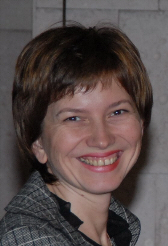TENDENCIES OF RUMOR CHANGE: A NEW OUTLOOK
Аннотация
Ключевые слова
Литература
Allport F.H., Lepkin M. Wartime rumors of waste and special privilege: Why some people believe them. Journal of Abnormal and Social Psychology, 1945, vol. 40, pp. 3-36. doi:10.1037/h0058110 DOI: 10.1037/h0058110
Allport G.W., Postman L. The basic of psychology of rumor. -New York: Academy of Sciences, 1945. S. II, no. 8, pp. 49-58.
Allport G.W., Postman L. An analysis of rumor. The Public Opinion Quarterly, 1946-47, vol. 10, no. 4, pp. 501-517. Doi:10.1093/poq/10.4.501 DOI: 10.1093/poq/10.4.501
Allport G.W., Postman L. J. The psychology of rumor. -New York: Holt, Rinehart & Winston, 1947. 247 p.
Bartlett F.C. Remembering: An experimental and social study. -Cambridge: University Press, 1932. 344 p.
Blumer H. Collective behavior. In A.M. Lee (Ed.), Principles of Sociology. -New York: Barnes & Noble, 1946, pp. 166-222.
Bordia P., DiFonzo N. Problem solving in social interactions on the Internet: Rumor as social cognition. Social Psychology Quarterly, 2004, vol. 67, no. 1, pp. 33-49. Doi:10.1177/019027250406700105 DOI: 10.1177/019027250406700105
Buckner H.T. A Theory of rumor transmission. Public Opinion Quarterly, 1965, vol. 29, no. 1, pp. 54-70. Doi:10.1086/267297 DOI: 10.1086/267297
DiFonzo N., Bordia P. Rumor and prediction: Making sense (but losing dollars) in the stock market. Organizational Behavior and Human Decision Processes, 1997, vol. 71, no. 3, pp. 329-353. Doi:10.1006/obhd.1997.2724 DOI: 10.1006/obhd.1997.2724
DiFonzo N., Bordia P. Rumors and stable-cause attribution in prediction and behavior. Organizational Behavior and Human Decision Processes, 2002, vol. 88, no. 2, pp. 785-800. Doi:10.1016/S0749-5978(02)00016-X DOI: 10.1016/S0749-5978(02)00016-X
DOI: https://doi.org/10.12731/wsd-2014-9-21
Ссылки
- На текущий момент ссылки отсутствуют.
(c) 2016 В мире научных открытий
ISSN 2658-6649 (print)
ISSN 2658-6657 (online)






